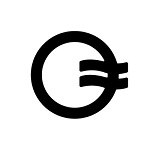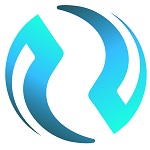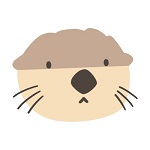DEX
| Projects | Description | Interest lvl | ||
|---|---|---|---|---|
Jupiter is the key liquidity aggregator for Solana, offering the widest range of tokens and best route discovery between any token pair. | ||||
OpenOcean is a full CeFi and DeFi aggregator that aggregates mainstream DEXes on public chains and mainstream CEXes. OpenOcean helps user to find the best price ... | ||||
A leading crypto wallet, gateway to the Smart Economy. | ||||
Backpack is a cryptocurrency exchange and multi-chain wallet designed to redefine how users interact with digital assets. It offers a unique self-custody soluti ... | ||||
Magic Eden is the largest NFT marketplace on the Solana blockchain. It allows traders to buy, sell, mint and manage tokens, and it includes a thriving secondary ... | ||||
Discover the world of crypto like never before with Layer3. Our interactive Quests make learning and exploring crypto fun, engaging, and rewarding. Collect CUBE ... | ||||
Orbiter Finance is a decentralized cross-rollup Layer 2 bridge with smart contracts only on the destination side and is Ethereum's future multi-rollup infrastru ... | ||||
SynFutures is a decentralized derivatives exchange (DEX) that allows anyone to list and trade futures on any asset with a price feed—cryptocurrencies, stocks, ... | ||||
Bluefin is a decentralized, orderbook-based exchange. | ||||
Gearbox Protocol brings you composable leverage, allowing anyone to margin trade on Uniswap, leverage farm on Curve, leverage stake on Lido, and use 10X more ca ... | ||||
Polkastarter is a DEX built for cross-chain token pools and auctions, enabling projects to raise capital on Polkadot | ||||
Synthetix Network Token (SNX) is a digital token that allows users to trade a host of financial securities like stocks, bonds, currencies, crypto, and other ass ... | ||||
The Universal Layer-2 DeFi Protocol for Cross-Chain Derivatives Trading. | ||||
Ardana is an on-chain asset backed stablecoin protocol and decentralized exchange stable asset liquidity pool built on Cardano. | ||||
The Bancor protocol standardizes smart tokens, enabling asynchronous price discovery and continuous liquidity for cryptocurrencies using constant ratios of rese ... | ||||
Anyswap is a fully decentralized cross chain swap protocol, based on Fusion DCRM technology, with automated pricing and liquidity system. | ||||
The Mobius protocol is a decentralized trading platform that can create and trade any synthetic asset, powered by our risk control algorithm. We offer low fees ... | ||||
Kyber design allows for any party to contribute to an aggregated pool of liquidity within each blockchain while providing a single endpoint for takers to execut ... | ||||
WingSwap is the first DeFi platform that provides both AMM and integrated NFT Farming on Fantom blockchain network. We provide automated, blazing fast and all-r ... | ||||
The CompendiumFi platform is built for traders using the FTX and Serum ecosystems. We offer a long list of products and strategies to help make crypto trading e ... | ||||
Sifchain’s mission is to be an omni-chain DEX. Sifchain, which inherits its infrastructure from Thorchain and Cosmos, will target 20–25 blockchains (such as ... | ||||
We provide a complete ecosystem around the concept of social trading including CeFi, DeFi and Staking services. | ||||
YFDAI is a DeFi protocol and ecosystem that manifests decentralized finance vision by offering DeFi services to anyone with an internet connection. | ||||
Lighter is a perpetual trading protocol based on Ethereum. It is a specialized zk-rollup that utilizes cryptographic methods and data structures to ensure scala ... | ||||
HAEDAL is the ultimate place for users to stake and earn on Sui, building the prime liquid staking protocol powered by Hae3 products that extract revenue from S ... | ||||
Stable Jack provides yield-based stablecoins, volatility AVAX tokens, and stable swap products. | ||||
DragonSwap is a Central DeFi Hub native to the Sei Network leveraging everything a paralleized EVM has to offer. | ||||
Kayen Protocol is a community-driven RWA ecosystem dedicated to SportFi and SocialFi built on the Chiliz Chain. | ||||
Sorella Labs is focused on addressing Ethereum's Maximum Extractable Value (MEV) issue by developing two tools: Brontes and Angstrom. Brontes is an open-source ... | ||||
Kinto is an L2 focused on providing safe and insured access to financial services. It's built on top of the Ethereum network using the Arbitrum stack and is non ... | ||||
Jasper Vault is a peer-to-peer interoperable options protocol built for both new and experienced option traders. | ||||
Helix is more than just on-chain financial infrastructure. It represents a new era for decentralized finance where ownership, performance, and transparency come ... | ||||
Gasp offers native cross-chain swaps without resorting to traditional bridges through the power of escape hatches which guarantee the withdrawal of user funds a ... | ||||
XYRO is a unique gamified social trading platform merging GameFi and SocialFi to demystify crypto. | ||||
Nektar seamlessly connects Operators, Networks, and Delegators to match their infrastructure and liquidity needs. | ||||
AZCoiner is a platform integrates AI into Web3 for user profit maximization while maximizing profit efficiency. | ||||
An all-in-one command center for traders and devs with a personalized experience allowing you to take control of your web3 experience as a user and manage all a ... | ||||
Reya Network stands trading-optimized modular Layer 2 (L2) solution. Its innovative design fosters unparalleled liquidity, capital efficiency, and performance f ... | ||||
Trakx is a regulated crypto-index trading platform offering themed crypto-traded indices (CTIs) and strategies. | ||||
Filament is an oracle-based perpetual decentralized exchange (DEX) on the Sei Network. It is designed to help traders and liquidity providers maximize the benef ... | ||||
Yield & metagovernance protocol built on ThrusterFi and optimized for Blast. | ||||
Pear Protocol is an on-chain spread trading platform allowing users to create leveraged long and short positions on different assets. Spread trading — or spec ... | ||||
Rage Trade is a multi-chain perp aggregator that works across all compatible chains (EVM L2s, L1s, AppChains, Cosmos, etc). Trade against deep unified liquidity ... | ||||
The mission of Agora is ambitious, yet straightforward. We aim to bring gamers and developers closer than ever, in an innovative environment where gamers commun ... | ||||
Huma is a decentralized payment financing network built on the Solana blockchain and other platforms. It provides infrastructure that enables organizations and ... | ||||
Nabla AMM combines oracle-guided pricing with single-sided LPing to unlock deep liquidity and the highest capital efficiency. | ||||
Jumbo is designed to be the most user-friendly exchange that sets out to eliminate the common struggles people experience when navigating Decentralized Exchange ... | ||||
xDao is a DeFi protocol for quick and easy creation of Decentralized Autonomous Organizations — DAOs. | ||||
EYWA: The Future of Cross-Chain Liquidity EYWA is solving DeFi's biggest challenges—fragmented liquidity and cross-chain inefficiencies—by creating a unifie ... | ||||
Marble & Magicfi is a all-in-one Defi Reward Protocol. | ||||
What is DEX
A decentralized exchange is a service for exchanging cryptocurrencies that is fully or partially built on blockchain with smart contracts in its operation.
On a technical level, DEXs are censorship-resistant and accessible to everyone. This means that no team authorization is required to trade a certain asset, and a cryptocurrency wallet is enough to interact with the platform.
Another advantage of decentralized exchanges is that the trader’s funds remain under his management right up to the moment of exchange. This eliminates the possibility of assets being blocked.
How does DEXs work
In centralized platforms, assets are stored in the exchange’s accounts and transactions go through the exchange’s servers. In DEXs everything is different: users remain the owners of their assets throughout the trade, and each exchange is carried out directly between the wallets of participants.
Decentralized exchanges are based on smart contracts, i.e. small programs that execute automatically in the blockchain without human intervention.
Depending on the architecture, decentralized exchanges can use different mechanisms to process transactions. The best known are:
- Decentralized order book. Works roughly the same way as CEX, but all transactions are conducted in the blockchain, which requires a large number of transactions and corresponding commission costs. Due to its high cost, it has not been widely adopted.
- Centralized order book. A combination of CEX and DEX architecture, where orders are placed and aggregated on centralized servers, but the exchange itself takes place via a blockchain transaction. It is more economical and faster than the above mechanism, but less secure and still requires trust in the platform.
- Automated Market Maker (AMM). Exchanges take place using a value algorithm and liquidity pools that hold reserves for transactions. This mechanism requires significantly fewer resources than a decentralized order book, but still retains the benefits of distributed execution.
The majority of currently popular DEXs, such as Uniswap and PancakeSwap, use the AMM algorithm in various modifications.
Liquidity Pools
A liquidity pool is a smart contract that is holding a stock of two or more assets for exchange.
A kind of analog of a trading pair on centralized exchanges. Several hundreds or even thousands of pools can operate within a single DEX.
Liquidity (assets for the pool) can be provided by any owner of capital, the so-called liquidity provider. For his services, he receives a portion of the commission from the exchanges conducted through the pool, and in some cases, additional rewards from the exchange.
To become a liquidity provider, as a rule, it is necessary to deposit both assets of an exchange pair into the pool at once. For example, in the ETH/USDT pool you need to deposit 50% of the desired amount in ETH and 50% in USDT.
It is important to take into account that each liquidity pool is, in fact, a separate market with its own balance of supply and demand, so price gaps may occur between different pools and platforms. They appear due to the processing of large transactions or withdrawal of liquidity and in most cases are quickly eliminated by arbitrage traders.
Liquidity aggregators
Another decentralized tool for exchanging cryptocurrencies are liquidity aggregators. These services allow you to use pools of several dozens or even hundreds of DEX for a transaction.
The main mechanism of the aggregator is a router – a special smart contract that compares prices in different pools to determine the most favorable rate and the site for the transaction.
In addition, the aggregator can split a large trade into several smaller ones and send them to different pools to minimize slippage, or perform a multi-step exchange if it is more profitable. These features simplify traders’ activities, as they do not need to monitor dozens of DEXs manually.Externally, aggregators are virtually the same as DEXs, but transactions through them can take longer and in some cases with higher commissions. Examples of such platforms are 1inch, LlamaSwap or Jupiter.
Due to technical peculiarities and relatively complex architecture, the use of decentralized sites is associated with additional risks. Among them:
- Slippage. This is the difference between the expected and final price of a transaction. Slippage happens on centralized exchanges, but in AMM there can be stronger deviations.
- Non-constant losses. The price of assets in the pool can fall below the value on centralized exchanges, resulting in losses for the liquidity provider if it decides to withdraw assets at that point.
- Limited functionality. Most DEXs do not allow for derivatives trading, leverage or different order types. Such platforms do exist, but the risks associated with them are higher than in similar centralized services.
- Technical difficulties. The interface of decentralized exchanges seems simple, but conducting an exchange requires taking into account commissions, slippages, interactions of various chains and pools. For a beginner, this is much more complicated than placing an order on CEX.
- Fraud. Since no authorization is required to trade on DEX, these platforms often create fake tokens or fraudulent liquidity pools.
Ultimately, the independence that DEXs give requires more responsibility on the part of the user, as well as an understanding of the many technicalities of how the blockchain works. Therefore, beginners are often better off starting with centralized exchanges and moving to decentralized exchanges as they gain experience interacting with digital assets.
Conclusion
As we can see, crypto-enthusiasts are faced with a choice. Working through DEX is more suitable for those who do not often invest in certain digital assets for a long period of time. Thanks to DEX, this is easier to do, as the tokens or coins will go straight to the owner’s wallet. At the same time, those who are interested in full-fledged exchange trading and a high level of security are better off working on centralized exchanges.


















































